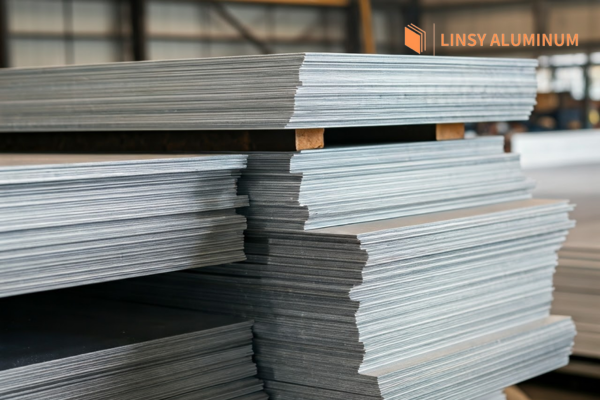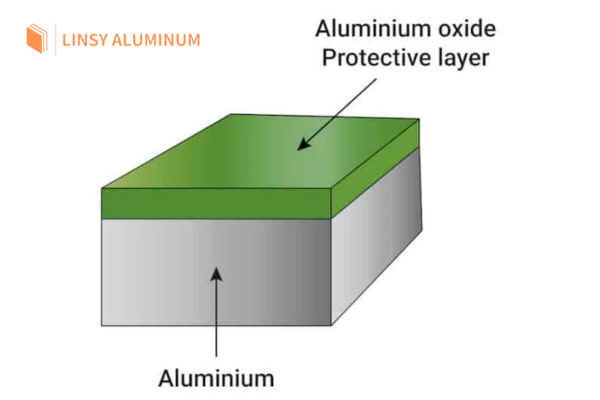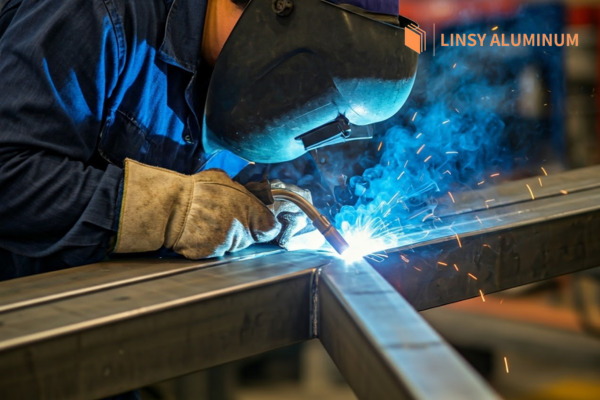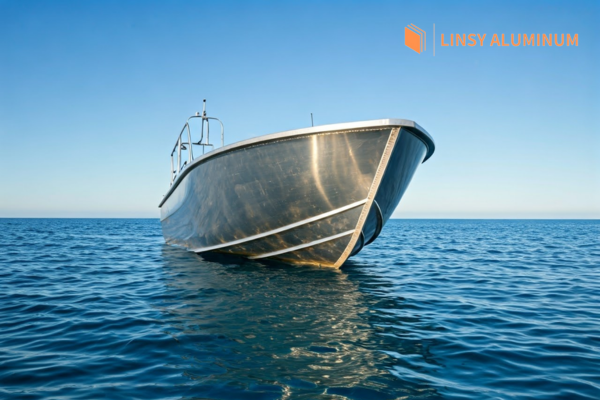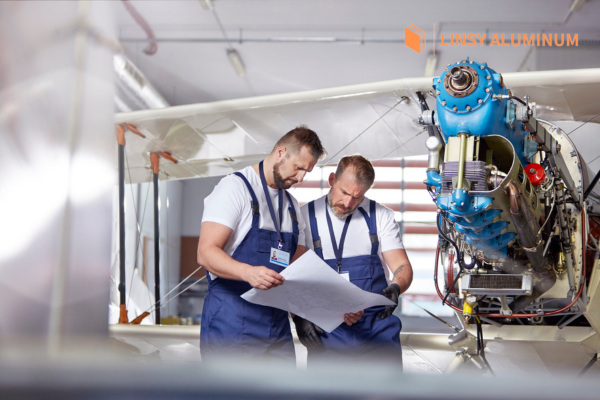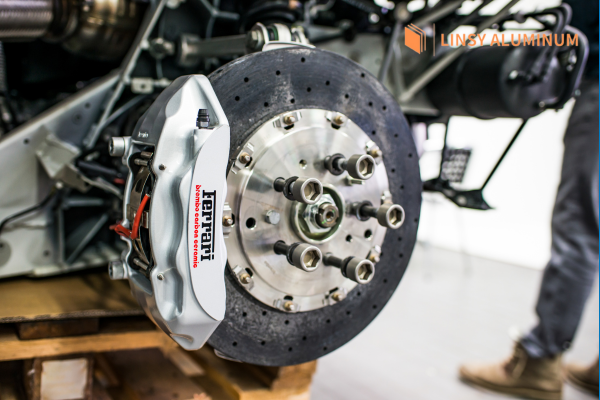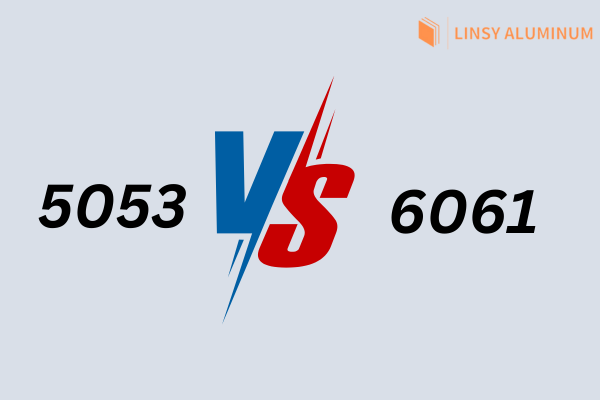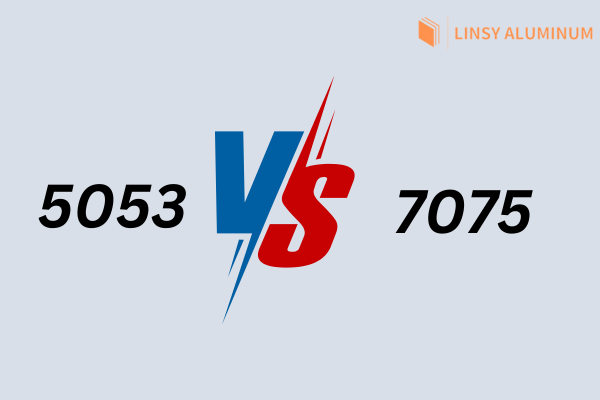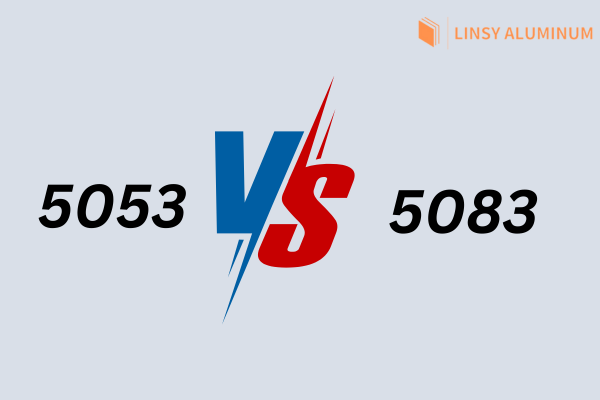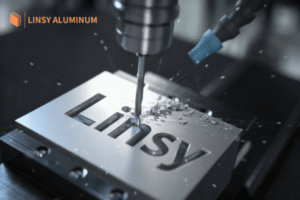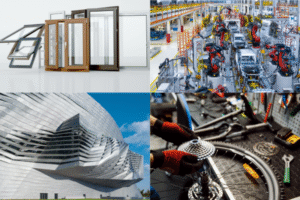Key Highlights
-
5053 aluminum is an alloy that cannot be heat-treated. It is well-known for its strong resistance to corrosion, especially in places near water.
-
This alloy is very flexible and easy to weld. It works great for projects that need detailed designs and strong connections.
-
5053 aluminum is strong and easy to shape. It can be used for many purposes, from making boat hulls to building pressure vessels.
-
When compared to other alloys, like 6061, 5053 stands out. It is more resistant to saltwater and tough marine conditions.
-
If your project needs strength, good weldability, or resistance to corrosion, 5053 aluminum could be the right choice.
Introduction
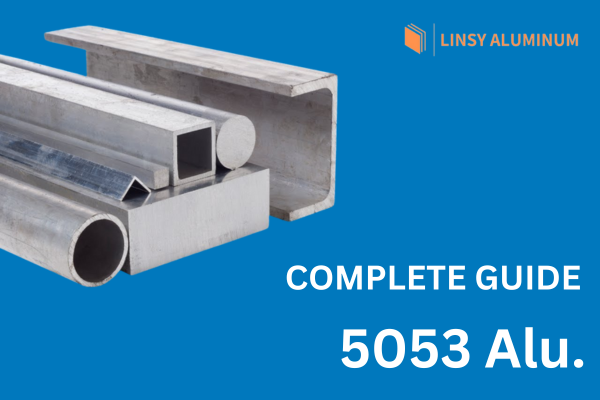
In the big world of aluminum alloys, it can be hard to find the right material. You need one that is strong, easy to weld, and resistant to corrosion. That’s where 5053 aluminum shines. This amazing alloy is easy to find as an aluminum sheet from many manufacturers, including those in China. Its great qualities make it a popular choice for many projects. Because of its special features and benefits, it is used in industries like marine, aerospace, and automotive.
What is 5053 Aluminum?
5053 aluminum is a strong alloy that resists rust. It is mainly used in the aerospace industry. This alloy is easy to weld and shape into different forms. Compared to other alloys like 6061, 7075, and 5083, 5053 is special. It has a one-of-a-kind mix of qualities that sets it apart.
Definition and Composition
5053 aluminum is part of the magnesium-aluminum alloy group. It is called a non-heat-treatable alloy. This means that its strength is improved by cold working methods instead of heating it up for treatment.
The strength and durability of the alloy come mainly from its composition. Magnesium is the key element. It plays an important role in making the alloy strong but light and helping to resist damage from rust and corrosion.
The alloy is carefully balanced. It mainly includes aluminum, magnesium, chromium, and small amounts of other elements. This special mix makes 5053 unique, and because of this, it is often used in many industrial applications.
Properties and Benefits of 5053 Aluminum
5053 aluminum is unique and popular for various projects. It resists rust well, especially in wet areas,such as marine. Its high strength and chemical composition make it durable in tough weather. Besides being long-lasting, it’s easy to shape and weld for strong joints.
Understanding 5053 Aluminum Unique Characteristics
The best benefit of 5053 aluminum is its strong resistance to corrosion. This makes it a great choice for marine settings where saltwater is always present. The alloy creates a protective oxide layer that helps keep it safe from the harmful effects of the sea.
The alloy’s great weldability makes it a strong choice for projects needing tough and smooth joints. 5053 aluminum can be easily welded using regular techniques, helping create strong connections between parts and leading to a more reliable final product.
Corrosion Resistance
5053 aluminum is highly rust-resistant, especially in ocean settings, due to its magnesium content. This metal forms an oxide shield that shields it from saltwater and other elements. As a result, it requires less maintenance and outlasts many materials. Its corrosion resistance makes it a preferred option for marine applications like boat hulls and docks.
Excellent Weldability
Welding 5053 aluminum is easy with methods like MIG, TIG, and resistance welding. These methods create clean, strong, and corrosion-resistant welds, ensuring the structure remains durable in tough situations and preventing serious problems.5053 aluminum’s excellent weldability makes it popular in various industries for strong joints.
Creative Applications of 5053 Aluminum in Projects
5053 aluminum isn’t just suitable for construction. Its excellent properties have made it useful in many unique ways across different fields. Its strong strength, easy formability, good welding capabilities, and resistance to the weather make it perfect for unconventional projects.
It’s great for complex art pieces and special parts. People use it in areas like marine, aerospace, and automotive, showing that it can handle more than just everyday tasks and has the potential to push beyond normal limits.
Marine Applications
5053 aluminum is excellent in marine environments because it resists corrosion from saltwater really well. This makes it one of the best materials for building boats and other marine equipment. It stays strong even when constantly exposed to moisture and salty air.
Boat builders love 5053 aluminum for making hulls, decks, and other boat parts. It’s lightweight, which helps save fuel, and it’s strong enough to withstand rough sea conditions. It’s also used to make rust-resistant parts like cleats, railings, and ladders.
Another benefit is its excellent weldability, which allows for tight, waterproof seams. This is crucial for keeping the boat safe and strong. All these qualities make 5053 aluminum a top choice in the marine industry.
Aerospace Applications
When it comes to aerospace uses, 5053 aluminum is really great. It’s strong but lightweight, doesn’t rust easily, and is weldable. It also performs well in extreme temperatures, making it perfect for airplane parts.
Since China is a big supplier of aluminum sheets globally, using 5053 in aerospace applications gives you reliable and high-quality results. This aluminum is useful in other areas, too, not just for boats, which makes it a top choice for building aircraft. Its lightweight and strong properties make 5053 aluminum a dependable option in the aerospace industry.
Automotive Applications
Cars need materials that are strong, safe, and help save gas. 5053 aluminum is a great choice! It’s lightweight, which is really important for fuel efficiency these days.
You’ll find this aluminum in many car parts. Consider the outside panels, parts that protect from heat, and even the inside frame.
5053 aluminum is also strong and can absorb the force of a crash, keeping people inside the car safe. Its strength and flexibility help the car handle crashes and spread out the impact.
Comparison with Other Aluminum Alloys
Among aluminum alloys, 5053 aluminum is well-known for its great ability to be welded and shaped. It resists corrosion better than 6061 aluminum, which makes it a good option for use in water. While it is not as strong as 7075 aluminum, 5053 is more flexible, making it good for complex designs. Compared to 5083 aluminum, 5053 has better formability and weldability. This is why it is commonly used across several industries in China. Knowing these differences can greatly help you pick the best material for your projects.
5053 vs. 6061 Aluminum
6061 aluminum is well-liked because it is strong and can be used in many ways. It is often found in structural parts and places where high corrosion resistance is needed. In contrast, 5053 aluminum is easier to weld. It is a better choice for marine uses since it resists corrosion well in seawater. Both alloys are great options, but choosing between 5053 and 6061 aluminum will depend on what your project needs.
|
Property/Aspect |
5053 Aluminum |
6061 Aluminum |
|
Main Alloying Element |
Magnesium (2.2–2.8%) |
Magnesium (0.8–1.2%) and Silicon (0.4–0.8%) |
|
Heat Treatability |
Non-heat treatable; strengthened by cold working |
Heat treatable; can be strengthened through precipitation hardening |
|
Tensile Strength (UTS) |
~228–290 MPa |
~241–310 MPa |
|
Yield Strength |
~193 MPa |
~276 MPa |
|
Corrosion Resistance |
Excellent, especially in marine and saltwater environments |
Good, but less resistant to saltwater than 5052 |
|
Formability |
Excellent: ideal for bending, rolling, and forming |
Good; less formable than 5052 due to higher strength |
|
Weldability |
Excellent |
Good; requires proper techniques to avoid cracking |
|
Machinability |
Poor |
Good |
|
Fatigue Strength |
Higher (~117 MPai) |
Lower (~96.5 MPa) |
|
Thermal Conductivity |
~138 W/m-K |
~167 W/m-K |
|
Density |
~2.68 g/cm³ |
~2.70 g/cm³ |
|
Applications |
Marine equipment, fuel tanks, pressure vessels, electronic enclosures |
Aerospace components, automotive parts, structural applications |
5053 vs. 7075 Aluminum
7075 aluminum is stronger than 5053 aluminum. This makes it a good choice for jobs that need high strength. On the other hand, 5053 aluminum is better at resisting rust, which is important in ocean settings. Because of its strength, 7075 is often used in planes. Meanwhile, 5053 is best for marine work where being rust-free matters more. It’s important to consider what you need for your project. This will help you choose between 5053 and 7075 aluminum so you can get the right mix of strength and corrosion resistance.
|
Property/Aspect |
5053 Aluminum |
7075 Aluminum |
|
Main Alloying Element |
Magnesium (2.2–2.8%) |
Zinc (5.6–6.1%) |
|
Heat Treatability |
Non-heat treatable; strengthened by cold working |
Heat treatable; strengthened through precipitation hardening |
|
Tensile Strength (UTS) |
~228–290 MPa (33–42 ksi) |
~540–570 MPa (78–83 ksi) |
|
Yield Strength |
~193 MPa (28 ksi) |
~480–510 MPa (70–74 ksi) |
|
Density |
~2.68 g/cm³ |
~2.81 g/cm³ |
|
Corrosion Resistance |
Excellent, especially in marine and saltwater environments |
Moderate; requires protective coatings for corrosion resistance |
|
Formability |
Excellent; ideal for bending, rolling, and forming |
Poor; limited formability due to high strength |
|
Weldability |
Excellent |
Poor; prone to cracking during welding |
|
Machinability |
Fair |
Good; better machinability than 5052 |
|
Fatigue Strength |
Higher (~117 MPa or 17 ksi) |
Excellent; suitable for high-stress applications |
|
Thermal Conductivity |
~138 W/m-K |
~130 W/m-K |
|
Applications |
Marine equipment, fuel tanks, pressure vessels, electronic enclosures |
Aerospace components, military equipment, sporting goods, high-performance vehicles |
5053 vs. 5083 Aluminum
5083 aluminum is stronger than 5053. So, if you need strength, 5083 is the way to go. 5053, on the other hand, is easier to weld, making it perfect for projects with lots of welding. Both resist rust, but 5083 is even better for saltwater because it has more magnesium. Think 5083 for boats or strong parts and 5053 for projects that need lots of welds.
|
Property/Aspect |
5052 Aluminum |
5083 Aluminum |
|
Main Alloying Element |
Magnesium (~2.5%) |
Magnesium (~4.5%) with Manganese (~0.7%) |
|
Heat Treatability |
Non-heat treatable; strengthened by cold working |
Non-heat treatable; strengthened by cold working |
|
Tensile Strength (UTS) |
~210–230 MPa (30–33 ksi) |
~330 MPa (48 ksi) |
|
Yield Strength |
~130–180 MPa (19–26 ksi) |
~240 MPa (35 ksi) |
|
Density |
~2.68 g/cm³ |
~2.66 g/cm³ |
|
Corrosion Resistance |
Excellent; suitable for freshwater and moderate saltwater exposure |
Superior; excellent resistance to saltwater and marine environments |
|
Formability |
Excellent; easily bends and shapes |
Reduced; harder to bend and shape due to higher strength |
|
Weldability |
Excellent; compatible with most welding techniques |
Excellent; widely used in marine welding applications |
|
Machinability |
Good |
Fair; slightly harder to machine due to higher strength |
|
Fatigue Strength |
Moderate (~120 MPa or 17 ksi) |
Higher (~160 MPa or 23 ksi) |
|
Applications in Marine Use |
Decks, superstructures, hatches, doors, interior components |
Hulls, bulkheads, stringers, transoms, and other structural components |
|
Cost |
Slightly lower |
Slightly higher |
Conclusion
In conclusion, learning about 5053 aluminum gives you many options for your projects. It is important to know its make-up, features, and special qualities. This helps you use it well in different areas like construction and aerospace. When you compare it with other aluminum types like 6061 and 7075, you can make smart choices for your work. Whether you are working on marine, automotive, or creative projects, 5053 aluminum is strong, resistant to corrosion, and easy to weld. Use the flexibility of 5053 aluminum to improve your project quality. For more details or quotes, contact us today.
Frequently Asked Questions
The difference between 5052 and 5053 aluminum.
5052 and 5053 aluminum sheets are great for marine use. They have small differences. 5052 has a bit more strength. However, 5053 is known for its better weldability, which makes it a better choice for complex designs in marine projects.
What is 5053 aluminum used for?
5053 aluminum is a great choice for marine uses like boat hulls because it is strong and easy to weld. You can also find it in fuel tanks, pressure vessels, and other tasks where corrosion resistance and solid structure are important.
How does 5053 aluminum compare to 6061 aluminum in terms of strength?
6061 aluminum and 5053 aluminum are both popular options. However, 6061 aluminum is usually stronger, especially after heat treatment. On the other hand, 5053 aluminum is better for weldability and resists corrosion well. This is especially true for marine uses.





